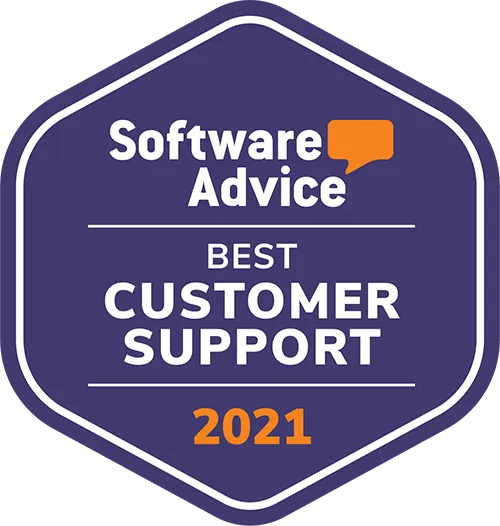It wasn’t a hard choice to select SmartSurvey. Not only did they understand what we were looking to achieve right from the start, they presented a solution that represented everything we needed.
Measuring Customer Experience: CX Metrics You Need to Know
Measuring Customer Experience: CX Metrics You Need to Know

When implementing and running customer experience management (CXM), there are many experience metrics you can measure, each providing different insights throughout the customer journey. In this article, we are going to go over some of the most important CX metrics that you need to know.
We'll go over some CX metrics that you can't skip out on as well as CX metrics that are a little bit more advanced but crucial if you want to take customer experience to the next level.
But before we get into the different CX metrics that you can start measuring, we'd first like to give you an overview of CX metrics and why they are important.
The importance of CX metrics
CX metrics are crucial for every business, regardless of industry, size, or target audience. It is a well-known fact that companies, which make decisions and shape their strategies based on hard data, have a higher chance of improving customer satisfaction, customer loyalty, customer lifetime value, and revenue.
With that said, here are some more specific examples why CX metrics are important for every business.
Identify areas for improvement
Whether it's your product, service, customer support, or another aspect of your business, CX metrics can guide you to parts of the business that are underperforming. When you know which part of your business isn't meeting customer needs, you and your team can then take more precise action and make the necessary improvements.
Once the new changes are implemented, you can start collecting new data, which will help you see whether the new changes have had a positive impact on customer experience or if further optimisation is necessary.
Measure customer satisfaction
CX metrics such as CSAT can paint a very clear picture of how satisfied your customers are with various parts of your business, including your product, service, customer service, and more. When your customer satisfaction score is high, that's a good sign that everything (or some parts) of your business are functioning well. The opposite is true if your CSAT score is low.
Enhance decision making
Making the correct decisions to drive your business forward can be stressful, especially when you don't have any data that can support your ideas. In such a case, your decision making is based on prior experience and intuition, which often isn't enough.
Business owners who keep track of CX metrics have the necessary data to support their claims or prove their ideas otherwise. As a result, the number of bad decisions are brought to a minimum, saving the business a lot of time, resources, and money.
Drive business growth
To grow your business, you not only need to acquire new customers but also retain your existing ones for as long as possible. For most businesses, the latter is often the most challenging - especially those who don't keep track of key customer experience metrics.
When you collect data around key CX metrics, such as customer loyalty and satisfaction, it'll become much easier for you to spot issues within the customer journey and fix them before they affect customers at scale and increase your churn rate.
Monitor company performance over time
Keeping track of CX metrics allows companies to monitor the effectiveness of implemented changes over time. That way, businesses can double down on strategies that work and pull the plug on strategies that don't perform as well as initially thought.
Key customer experience metrics
Although you might not need to keep track of all CX metrics that we'll talk about in a moment, it's always good to know what CX metrics are out there, what their intended purpose is, and what insights they can bring to the table. WIth that said, the key customer experience metrics include:
Customer Satisfaction (CSAT)
Customer satisfaction, or CSAT measures how satisfied a customer is with a product, service, or interaction. To get the best and most accurate feedback, customer satisfaction is often measured right after a transaction using a single question survey asking the customer to rate their satisfaction on a scale from 1 to 5.
Using the data that comes from CSAT surveys, businesses can then make adjustments to their product, service, or customer service and see if the newly applied changes make a difference.
Net Promoter Score (NPS)
Net Promoter Score, also called NPS, gauges customer loyalty by asking how likely customers are to recommend your product or service to others on a scale of 0 to 10. Scores are categorised into Promoters (9-10), Passives (7-8), and Detractors (0-6).
You can calculate NPS by subtracting the percentage of detractors from the percentage of promoters. If you end up having a high NPS score, this suggests that your business has more promoters than detractors, meaning your business is more likely to grow through word-of-mouth.
On the opposite side of the spectrum, a low NPS score indicates that customers are not as likely to recommend your product or service to others. This will help you identify areas for improvement, which can have a major impact on customer loyalty.
Customer Effort Score (CES)
Customer effort score, also known as CES, is a single-item metric used to define how much effort customers must exert to have their needs met or get their issues resolved. Typically, customers rate their experience on a scale from “very difficult” to “very easy'. The final score will help businesses identify any friction points in the customer journey and address them to hopefully bump up the customer effort score in the future.
An example when a CES survey can be carried out would be after the customer purchases a product. If the post-purchase CES score is quite low, that would indicate that customers are finding the checkout process difficult. So, simplifying the checkout process can dramatically improve the customer effort score, and in turn, customer satisfaction.
Customer Lifetime Value (CLV)
Customer lifetime value (CLV) is a metric used to determine how much each specific customer has spent or is expected to spend with a business throughout the relationship. Having access to CLV data can help businesses determine who their most high-value customers are, segment them from the rest, and approach them differently with the goal of retaining their business for as long as possible.
Customer Churn Rate
This CX metric measures the percentage of customers who stop using a product or a service over a specific period. A high churn rate typically stems from low customer satisfaction, lack of value for money, or low product or service quality. So, if you want to hit your revenue targets and drive your business forward, staying on top of your customer churn rate and addressing any factors that negatively affect it is key.
Customer Health Score
Customer health score is a metric used by businesses to measure the likelihood of a customer churning. The lower the score, the higher the risk of churning. To accurately measure a customer's health score, data points such as product usage, support interactions, and customer satisfaction are taken into consideration.
Having a customer health score for all or most of your customers is key as it allows you to predict customer behaviour, streamline retention efforts, and identify customers who are at risk of churning.
Advanced customer experience metrics
So far, we've covered the key and most basic customer experience metric. However, there are some more advanced CX metrics that are worthy of a mention as they can help you paint an even clearer picture about the experience your customers are having with your business and help with making better decisions for the future. They include:
Sentiment analysis
Through the power of machine learning, businesses can analyse customer feedback (such as Google reviews) and determine whether their message is positive, negative, or neutral. If the result from the sentiment analysis is generally negative or neutral, that would suggest that customer satisfaction is low and that improvements need to be made or else, the customer churn rate is likely to increase.
Social media monitoring
With over 80% of the UK population using some form of social media, it's not uncommon for customers to take it to the internet to share their excitement, opinion, and frustrations about a brand's product or service.
As a result of that, now more than ever, brands should pay close attention to what people are saying about them in the digital space. That way, they can not only get an idea about customer satisfaction but be able to respond to customer feedback and manage their reputation in real time.
Heatmaps and click tracking
Heatmaps and click tracking are two great ways to optimise customer experience on your website. What these two CX metrics do is give you a visual representation of how customers use your website.
Based on the data you collect it will become much easier to identify usability issues and spot any navigational patterns. You can then use these findings to your advantage to make the needed improvements, which will result in better UX and increased conversion rates.
How to integrate and interpret CX metrics
To make your CXM campaign a breeze, the very first thing you need to do is find an unified platform that can help you manage your entire CX campaign.
Once you're settled on a CX platform that you want to use, the next step is to identify the key metrics that you want to measure, create the surveys, and start collecting data. Once the data starts coming in, it's time to analyse and interpret the results.
Unlike many CX platforms, SmartSurvey dashboards make data visible and easily consumable. This will allow you to get a good grasp of the data and the changes that your business needs to make in order to see an improvement in customer experience. From here on out - it's rinse and repeat.
If you're having a hard time understanding how to go about measuring key CX metrics, book a free demo and let our team show you how your business can benefit from using SmartSurvey.
Challenges in measuring CX metrics
Despite the obvious benefits that come with measuring customer experience, doing so is easier said than done. Oftentimes, businesses who try to measure CX face numerous challenges, including:
Siloed data across departments
This issue is mostly seen in large businesses with various departments. Oftentimes, the different departments within a business operate on their own and hardly ever communicate with the other departments. For example, customer service representatives will almost never touch base with the sales team and vice versa.
This can result in inconsistent customer experience and biases in data collection, which can skew the results. To resolve this common issue, it's important for all departments to follow the exact same approach to customer experience - and above all, share their findings with each other.
Turning data into actionable insights
You've collected all the data you need, but now what do you do with it? Turning data into actionable insights is a challenge a surprisingly large number of businesses face. To help you navigate this common pitfall, it's important to understand that not all data is the same.
You should also consider at which point in the customer journey the data was collected. For example, if you carry out a product-specific CSAT survey two weeks after the customer has made the purchase, the results should only be used to judge how satisfied the customer is with the product and nothing else.
That may sound simple, but businesses often take a piece of data and judge their entire business on the feedback - leading them to making decisions that are not ultra specific and may do more harm than good.
Wrapping up
Measuring customer experience allows businesses to gain an insight into their customer's needs and expectations. Using the collected data, businesses can then turn that information into actionable insights to provide the customers with what they want.
The result is improved customer satisfaction, increased customer lifetime value (CLV), and reduced churn rate. In today's competitive business environment, measuring CX metrics isn't optional. It's necessary to stay competitive and keep the business moving in the right direction.
With all that in mind, all that is left for you to do is decide which customer experience metrics you'd like to measure and SmartSurvey will help you take care of the rest.
Key takeaways
- Measuring CX metrics is vital for businesses who want to keep their customers satisfied, increase their CLV, and reduce churn rates.
- Before you do anything else, you should do your research and find one unified CX platform that meets your needs.
- Don’t forget to take advantage of advanced CX metrics such as heatmaps, click tracking, sentiment analysis, and social media monitoring. These are key for every business with an online presence.
- Measuring CX metrics doesn't come without some challenges (data silos, data accuracy, and turning data into actions). Overcoming those often requires the use of a robust data management system and a culture of continuous improvement.
- Measuring CX doesn't need to be complicated. You just need to find a platform that can help you every step of the way - just like we do at SmartSurvey.
How are we different?
UK based
Your data will be stored and processed here in the UK for your peace of mind.
Fanatical support
We pride ourselves on going above and beyond for our customers, providing expert advice and support whenever you need it.
You're in safe hands
Our secure platform and robust data protection measures ensure your data is safe and secure with us. We are ISO27001 and Cyber Essentials Plus certified.
We're human
We understand the importance of personal interaction, which is why we offer a human touch alongside our cutting-edge technology.
Accessibility matters
We're committed to making our surveys accessible to everyone, with a range of features to support those with disabilities.
Unlimited responses
With no limits on the number of responses you can collect, you can be sure your survey will reach as many people as possible without it being cost prohibitive.

Don’t just take our word for it
Over 500,000 users have registered to use SmartSurvey.


We couldn't be happier with SmartSurvey, we love its functionality and flexibility. This means we have been able to use one survey tool across many parts of the business.








Get in touch
We are ISO27001 certified, registered under the Data Protection Act and fully compliant with EU Privacy Laws.
Access to a knowledgeable account manager for personal assistance for when you most need it.
Our friendly design team is on hand to assist with any bespoke design and custom development requests.
We succeed if you succeed. Our goal is to help you carry out effective research and we’re here to help you achieve that.
